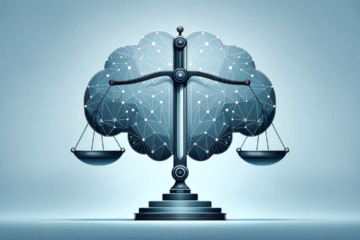
This article is written by Aaliya Fatima of University of Lucknow, an intern under Legal Vidhiya
Abstract
The Constitution of India is the second longest written Constitution in the world. The Constitution was ready on 26th November, 1949 while it came into force on 26th January,1950. The Constitution serves as a guideline for the country. A constitution is a document which states the ways according to which a country should be governed. This article focuses on the origin of the Constitution, it’s structure and the importance of it in the Democratic Republic of India.
Keywords
Constitution, democracy, law, charter, Republic, Justice
Introduction
In the present world scenario, where almost every country is sovereign or simply under its own control, it becomes all the more necessary to be aware of the Constitution of the world’s especially of your country’s constitution that is the Constitution of India. As said earlier, the Constitution of India came into force on 26th of January, 1950. For on that day, the present constitution of India was brought into force which announced to the world the birth of new Republic.
Meaning of Constitution
According to Hood and Phillips, Constitution is a system of Laws defining the composition of various organs of the government their relations inter-se and their relationship with private individuals.[1]
Origin of the Constitution
The origin of the Constitution and it’s growth has been broadly divided into five phases. We can broadly divide the phase as follows –
- 1600-1765
- 1765-1858
- 1858-1919
- 1919-1947
- 1947-1950.
- 1600-1765- The coming of the British
The British came to India in the early 1600s where they settled as traders and set up the East India Company. The Company secured for itself a charter from Queen Elizabeth in 1600 which fixed it’s constitution, laws and privileges. The Legislative powers were of great historical importance out which similar legislative powers were affirmed in the Constitution of India.
Also, the Charter of 1726 had a great legislative importance.
- 1765-1758- Beginning of the British Rule
The Regulating Act: The Act of 1773 is of great constitutional significance as it for the first time asserted the right of Parliament to handle the affairs of the East India company. It did these following things:
- Home government
- Form of Government in India
- Legislative powers
- Supreme court
The Act of Settlement ,1781: The Act provided the following things:
- It exempted the actions of public servants of the East India Company.
- Settled the question of jurisdiction of the Supreme Court.
- Laws that were applied to the Supreme court were made earlier.
The Charter Act of 1813 and 1833 and 1853- The three charter Act also serves as a historical origin for forming of the Constitution of India.
- 1858-1919- End of Company’s Rule
Following acts that served as an origin for this phase are:
- The Government of India Act, 1858
- Indian Council Act of 1861.
- The Indian Council Act of 1892
- Morley Minto reforms
- 1919-1947- Introduction to self government
Introduction to Self government has its origin in this phase. Local self government was indeed a productive step. Following are the acts of this phase:
- Government of India Act, 1919
- Government of India Act, 1935
- Federal courts
- Cripps Mission
- The cabinet Mission, 1946
- Indian Independence Act, 1947
- 1947-1950- framing of the Constitution
The period between 1947-1950 served as a time for framing of the new constitution gor India, here the members of the Constituent Assembly reviewed all the sources of India’s past as well as the sources of the world to frame a Constitution which is perfect for their Country. The framing of the Constitution tool 2 years 11 months and 18 days to form.
Structure of the Constitution
- The Constitution of India is composed of three hundred and ninety-five articles and twelve schedules.
- The Constitution of India is grouped into twenty-two parts
- The Constitution also has a preamble that gives the idea of the type of Constitution that India has with its word “secular”, “socialists” etc.
- While there are twelve schedules that lists the all the bureaucratic activities that were contributed.
Importance of Constitution
The Constitution of India is of great importance and significance. Following are some of the points that contributes towards the importance of such documents.
- The Constitution of India made it clear as to who shall have the powers to govern the nation: The makers of the constitution of India made sure to grant the powers in accordance with the norms.
- The Constitution of India provides the set of basic rules and principles that are required to govern a country: Directive principles of State Policy serve as guidelines for the government in order to run a country.
- Without the rules and regulations, the country would have been a total mess: If there were no rules and regulations, there would have been a great disorder where people would do whatever they wished to do, including the illegal acts as well hence the crime rates would have definitely hiked up.
- The Constitution of India is above anything else although it may be amended. It was done to place specific limit to the government: The makers of the Constitution made sure that the constitution is flexible as well as rigid. It was done to ensure that some parts of the constitution that needs amendment can be amended easily while important aspects that need amendments go through a strict process.
- The Constitution of India protects the integrity and sovereignty of the country: The constitution of India made sure that there is no external control over the domain of India thereby protecting it’s integrity.
- The Constitution of India ensures that the fundamental rights of the citizens are protected and nobody is exposed to injustice: The constitution of India, in order to protect the fundamental rights of the citizens of India introduced writs that can be used by the people if their rights feel threatened.
- The Constitution of India ensures that nobody is discriminated on the basis of anything and it ensures equality before law.
- The Constitution also provides the way to the government as to how they should work in times of emergency or any other special situations.
- The Constitution upholds the sovereignty of the country that is it confirms that India is not under any kind of external control and that it is free to carry out the functions of its country under its own will in accordance with the law.
Sources of the Constitution
- United Kingdom
Parliamentary government: The parliamentary form of the government is the democratic form of government wherein the representatives are chosen to be in the parliament.
Nominal head of the state: the nominal head of the state or that of India would be the President. This concept of President was derived from England.
Post of Prime Minister: The post of the Prime Minister in India is the most powerful post wherein the prime minister is given all the powers.
More powerful lower house: Lok Sabha or the lower house of the Parliament has more power than the upper house that is the Rajya Sabha. Incase of matters concerning money bills, the will of Lok Sabha prevails.
Concept of single citizenship: the Concept of Single Citizenship or simply that a person is the citizen of India and not of any specific states of India.
Legislative procedure: The legislative procedure of England was indeed reformative and hence adopted by the Constituent Assembly.
Bicameral legislature: the bicameral legislature in India is composed of two houses, the lower house and the upper house. The lower house is known as Lok Sabha while the upper house is known as the Rajya Sabha.
Rule of law: The concept of Rule of Law or the supremacy of law over anything else was adopted from the Constitution of England. Rule of law guarantees absence of arbitrary law, equality before law and presence of legal spirit.
Cabinet system: The prime minister chooses his /her council of ministers and allot them with important portfolios.
The legislative speaker and their role: the speaker are the residing officer of the parliament. This concept and his powers were also borrowed from the United Kingdom.
- United States of America:
Bill of Rights (Fundamental rights): The concept of Fundamental Rights were originally an American concept which was later adopted by the Constitution of India. Currently, the Constitution of India guarantees six fundamental rights to its citizens.
Written constitution: the makers of the Constitution made sure that the constitution is in written form so that it can easily be interpret by the future generations for references.
Preamble to the Constitution: The preamble to the constitution highlights the objective as well as the important points of the constitution as to what it is all about.
Federal structure of government: The federal Structure of the government that is the powers that are divided between the centre and the State.
Impeachment of the President: The process by which a president can be called off his post or simply impeachment and the procedure concerning the same is all adopted from the Constitution of United States of America.
Post of the Vice President and his functions: A vice president is the chairman of the parliament.
The institution of the Supreme Court: Supreme Court in India is considered as the highest judicial authority and that it’s judgement cannot be reversed. This Concept of Supreme Court was also taken from the United States of America.
Removal of Supreme Court and High courts judges: Like the process of impeachment of the president of India, the process of removal of judges of all courts specially the Supreme Court as well as the High court is also borrowed from the same.
Electoral College: The president, the vice president as well as members of the Upper house are elected by the electoral college that are voted by representatives elected directly by the people of India.
Independent judiciary and separation of powers: the concept that Judicial matters should be separated from the executive was done to ensure smooth administration and that justice is delivered fairly.
Judicial review: the concept of Judicial review is also obtained from United States of America.
President as commander-in-chief of the armed forces.
Equal protection under law: Article 14 or equality before law ensures that people are given rights equally irrespective of their caste, colour, creed and they all stand equal before law. This was a much-needed concept for India which was hence taken.
Other countries that serve as sources for the Constitution of India are as follows:
- Ireland
Directive principles of state policy[2]
Nomination of members to the Rajya Sabha by the President[3]
Method of election of the President[4]
- Australia
Freedom of trade between states
National legislative power to implement treaties, even on matters outside normal federal jurisdiction
Concurrent List
Provision of Joint Session of the Parliament
Preamble terminology
- Canada
Quasi-federal government—a federal system with a strong central government
Distribution of powers between the central and state governments
Residual powers, retained by the central government
Appointment of Governor of states by Centre
Advisory jurisdiction of the Supreme Court
- France
Notions of (liberty, equality, fraternity) in the preamble
The ideals of republic in the preamble
Conclusion
The Constitution of India is indeed the most important document of the Country. After India freed itself from the clutches of the British Empire in 1947, the country was in a total chaos, it had no rules and regulations of its own. It was then it got decided that India would frame for itself it’s own Constitution. Hence the constituent committee led by Dr Bhimrao Ambedkar with its sheer hard work and after two years, eleven months and eighteen days of continuous urge to frame such constitution that is impactful, rigid and flexible at the same time presented the Constitution of India on November 26, 1949 which later came into force in 1950 on the day we celebrate Republic day every year.
[1] Hood and Phillips- Constitutional Law, part 1 (4th edition)
[2] Dhavan, Rajeev (26 November 2015). “Document for all ages: Why Constitution is our greatest achievement”. Hindustan Times. OCLC 231696742. Archived from the original on 24 July 2018. Retrieved 24 July 2018.
[3] Constitution Day: Borrowed features in the Indian Constitution from other countries”. India Today. Retrieved 12 July 2021
[4] Ibid at 3




0 Comments